An autonomous last-mile delivery bot might seem unnecessary in countries like India where labor is available in plenty. However, the pandemic showed us the need for safe, contactless delivery options
Walk into the US Purdue University campus, and you will be surprised to find cute little robots moving silently and safely along the sidewalks, crossing cautiously at road junctions to deliver parcels, groceries, and food to students and staff. They deliver at university buildings, dormitories, meetup spots, and even playgrounds, ensuring that students get food when and where they want it.
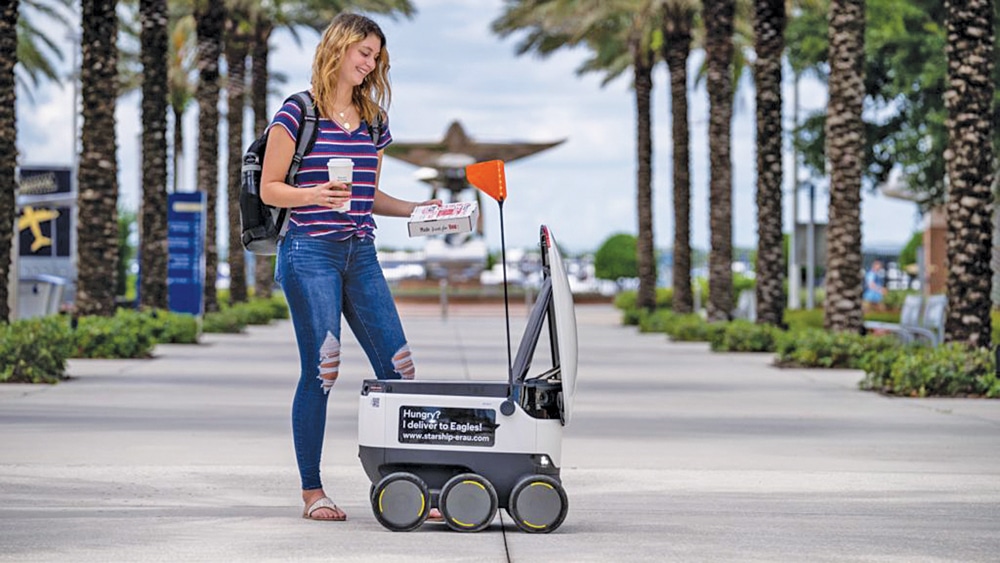
You will even find groups of robots huddled outside eateries waiting to pick up their next order, just like the Swiggy and Zomato delivery folks we see here. They operate as a mesh, and any bot can deliver from any store to any individual who orders through the app. Users can track the movement of the bot assigned to their order. The robots are fully autonomous, with monitoring technology in place, and can carry payloads up to 9kg and travel up to 6.4km per hour.
Starship Technologies operates delivery robots in more than 20 universities across the US. When they recently surveyed around 7,000 college students from across these campuses, 60% said they could study more because the robots delivered when and where they needed them, 30% said they felt safer on campus because of the contactless delivery offered by the robots, and nearly two-thirds said they didn’t skip meals because the robots helped them skip the queues!
| Brad’s Autonomap |
| Software developer, Internet entrepreneur, and self-driving car consultant Brad Templeton has launched “Autonomap” (https://robocars.com/autonomap.html), which lets users see the concentration of autonomous vehicles (AVs) on roads and sidewalks, in various parts of the world. It is his attempt to convince people that AVs have arrived.This map shows all active autonomous vehicle services for both passengers and delivery. It has layers you can enable and disable. Markers in red represent services that are autonomous with no staff/safety driver on board, and serving the public. Other colors represent different levels of autonomy. The small icons represent delivery vehicles, which cannot carry people onboard.
“This map is somewhat of a response to people who claim autonomous vehicles are something of the far future. As the aphorism goes, it’s here, just not evenly distributed yet. However, it is largely limited to the USA and China, with a few areas in Europe, Canada, Korea, and the Middle East. This is due to the regulatory regimes in these areas. The USA has a permissive regulatory system—it’s permitted until somebody forbids it. China isn’t this way but can move quickly to change regulations,” he explains in one of his articles about the map. |
Although they all know that these robots are full of motors, actuators, sensors, cameras, radar, and lidar technologies, all controlled by loads of complex software running on the cloud, some students admitted to treating the lovable robots like normal people, saying thank you, excuse me, etc. to them, patting them, taking selfies, and helping them if they seemed to need it. Nine out of ten students found the robots to be convenient and helpful, and most said they would continue to use delivery robots after graduating if the service was available in their neighborhood.
These friendly delivery bots are working their magic outside university campuses too. Some residential localities in the UK—such as Milton Keynes, Bedford, Northampton, Cambourne, Cambridge, and Leeds—have deployed autonomous deliveries.
According to a report, these robots are powered by renewable electricity and can travel around three kilometers using lesser energy than it takes to boil water for a cup of tea. The report estimates that since their introduction in the UK, these autonomous robot deliveries have saved nearly 1.8 million kilometers of car journeys, with a 445-tonne reduction in carbon dioxide emissions. Starship’s delivery robots have apparently completed around four million deliveries around the world to date.
Our fancy takes flight when we hear the phrase autonomous vehicle (AV). We start dreaming of cities as safe havens populated with self-driving cars and trucks. But a look at the roads around you would serve as a reality check, and you might lean more in favor of a report by Accenture, which indicates that there is no realistic chance that full-on self-driving will be available before 2030 and that too only in a tiny number of high-end sedans and SUVs! Given that roads and routes spell chaos and uncertainty, especially in developing nations, self-driving cars do seem far away from practical deployment.
But wait, all that research and tech is not going to waste! Autonomous delivery systems, which pretty much use the same technologies as self-driving cars, have already arrived in various parts of the world. Just that, they carry things instead of people. Autonomous delivery systems are being deployed in environments ranging from mines, war fields, and hospitals to warehouses, industries, airports, college campuses, and residential localities.
We have already touched upon their use in the industrial space in our story on cobots (collaborative robots). We have seen how they work alongside human workers, delivering spare parts, samples, and many other goods, when and where required. In this story, let us explore the potential of autonomous last-mile delivery, which promises to be the near-future precursor to self-driving cars.
Why the Bot?
The need for autonomous last-mile delivery was felt badly during the pandemic period when most merchants were open only for delivery but it was difficult to find people for the job. Customers were also favoring contactless deliveries. This gave autonomous delivery vehicles and bots a much-needed push.
However, Scott Rosenberger, Global Transportation, Hospitality & Services sector leader, Deloitte, states in a report that, “While driverless delivery technology has gathered momentum during the pandemic, it will easily outlast this period with both companies and consumers recognizing and, already, reaping benefits from it.”
Must Read: Teach Your Drones To Do More Than Fly
Here are some reasons why the technology picked up and is likely to continue growing in the coming years:
- During the pandemic, there was a dire need to deliver goods, especially food, safely to people. Customers feared human delivery agents, who could be carriers of disease and preferred to deal with these little bots instead. Autonomous delivery services often use contactless authentication—such as scanning a QR code sent to the customer’s phone—to open the box locker and retrieve their goods, without punching any keys.
- Most AVs are electric-powered and often utilize renewable power sources for charging. Autonomous delivery fleets are usually controlled by smart, cloud-based software systems, which help to optimize routes and reduce energy consumption further. All of this helps reduce emissions and meet sustainability goals.
- Autonomous delivery systems help overcome the problem of inaccessibility. According to a Deloitte report, even before the pandemic, remote regions of the world were using drone delivery and zip lines for essential supplies. This system has further developed to deliver a wider variety of goods.
- Also, since AVs or robots generally have a smaller form factor with shorter wheelbase, and dynamic map support to beat the city traffic, they are able to reach places faster and better even within the city.
- Since they move as per software-suggested routes and can be tracked all the time, the delivery time is also more predictable and accurate.
- Ford and Volkswagen closed down their self-driving technology initiative Argo AI as they felt that creating a robot taxi capable of navigating in a dense urban landscape is harder than putting a man on the moon. Part of the challenge is technological, while part of it is regulatory. In most regions, government regulations prohibit fast, self-driving cars on public roads. And their concern is quite understandable. However, most regulatory bodies are prepared to allow, or at least consider, autonomous last-mile delivery systems as these are quite small, carry smaller payloads, weigh less, and it would not hurt much even if it inadvertently bumped into a human. A small cart obviously looks less lethal than a huge truck or car without anyone behind the wheels. Direct delivery devices are permitted in several American cities, including Chicago, Detroit, and Pittsburgh. It is deemed as a way to reduce vehicular congestion and cut down on emissions. Several places in the UK, China, the Middle East, and Africa also permit autonomous deliveries.
- Autonomous delivery systems do away with the uncertainties related to manual labor, such as availability and pricing.
- The technological world has made great strides in sensing, mapping, artificial intelligence (AI), and cloud-based deployments. And there is this new-born realization that it is better to put self-driving technologies to use in a smaller format for more immediate use cases. All this has given autonomous delivery the fillip it deserves.
According to a Fortune Business Insights study, the global autonomous last-mile delivery market is projected to grow from $11.12 billion in 2021 to $51.38 billion by 2028 at a compound annual growth rate (CAGR) of 24.4% in the forecast period. Allied Market Research projects that the market will reach approximately $90 billion by 2030. Another report pins it at approximately $80 billion. Values vary but most market research firms make positive predictions for autonomous last-mile delivery.
There are several modes of autonomous last-mile delivery—drones, zip lines, small vehicles, or robots and trucks. Going forward, deployments are likely to be multi-modal, with trucks for moving goods from the warehouses to retailers, small vehicles and robots to deliver to the consumers’ houses, and drones and zip lines for hard-to-reach destinations across rough terrains that will prove tough for the bots.
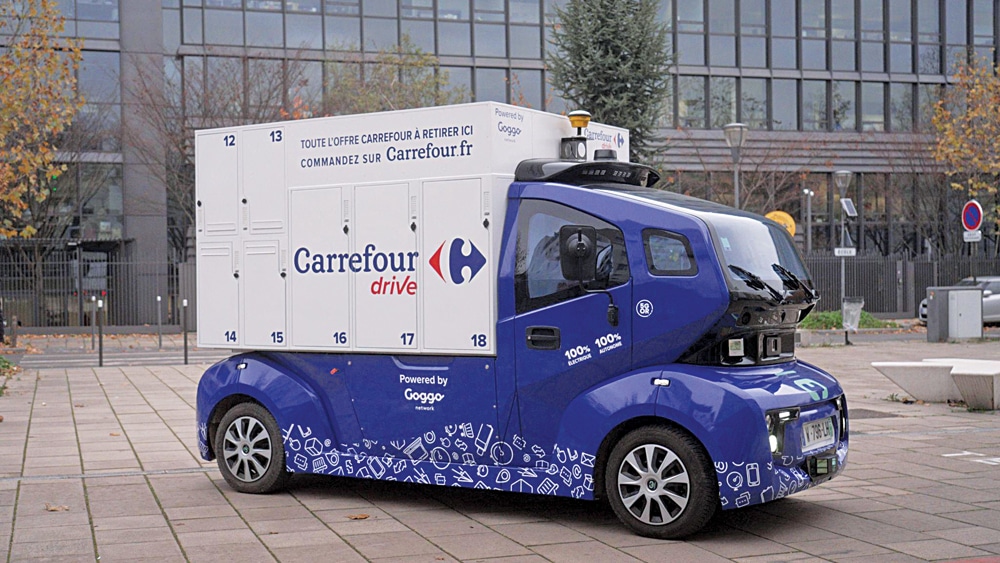
Aerial Delivery Drones
According to a report published by McKinsey last year, drones could become an important part of the delivery supply chain. It says, “In early 2022, more than 2,000 commercial drone deliveries were occurring every day worldwide, and that number has only grown since. While this number is still small relative to the total number of commercial deliveries, it indicates that current activity involves more than just test flights. Drone technology has the potential to meet a range of last-mile consumer use cases, such as prepared food, convenience products, and other small packages, as well as B2B needs, such as moving medical samples to labs.”
Drones might have an edge over other delivery options in regions with poor road infrastructure. Last year, a team of researchers at Carnegie-Mellon University also showed that using small drones for the last mile of package deliveries uses less energy and creates fewer emissions than conventional means. Being small, fast, and eco-friendly, drones do appear to be a great bet.
However, at present the labor costs involved in aerial delivery are very high. In most countries, people are allowed to operate and monitor only one drone at a time. They also need to monitor the airspace in which the drone operates. This increases the labor cost involved, with each drone requiring an operator. Unless regulations allow a single operator to manage at least 20 drones, the cost of operating drones cannot even compete with other delivery options.
At present, drones are highly regulated, and many areas are out of bounds owing to security and privacy concerns. Nevertheless, some of the industry majors are finding drone delivery to be an attractive option. Companies like Skyports and Airbus have demonstrated shore-to-ship deliveries using drones. Matternet, another commercial drone service provider in Europe, recently launched one of the longest urban drone delivery routes to transport diagnostic samples between hospitals and laboratories in Zurich, Switzerland.
Walmart and Amazon are already delivering through drones in parts of Arizona, Arkansas, California, Florida, North Carolina, Texas, Utah, and Virginia. Walmart has 37 stores set up for drone delivery to homes and businesses. It has partnered with drone delivery service DroneUp Delivery to deliver packages that weigh up to 4.5kg. The service functions only during the daytime and, according to a Walmart statement, they have more than 10,000 items available for drone delivery; the orders are delivered in around half an hour.
Amazon has started drone deliveries in parts of Northern California and Texas using its in-house Amazon Prime Air fleet of drones, which can carry items up to 2.25kg. The deliveries are monitored by Amazon employees and dropped in customers’ backyards. This service too is available only in the daytime.
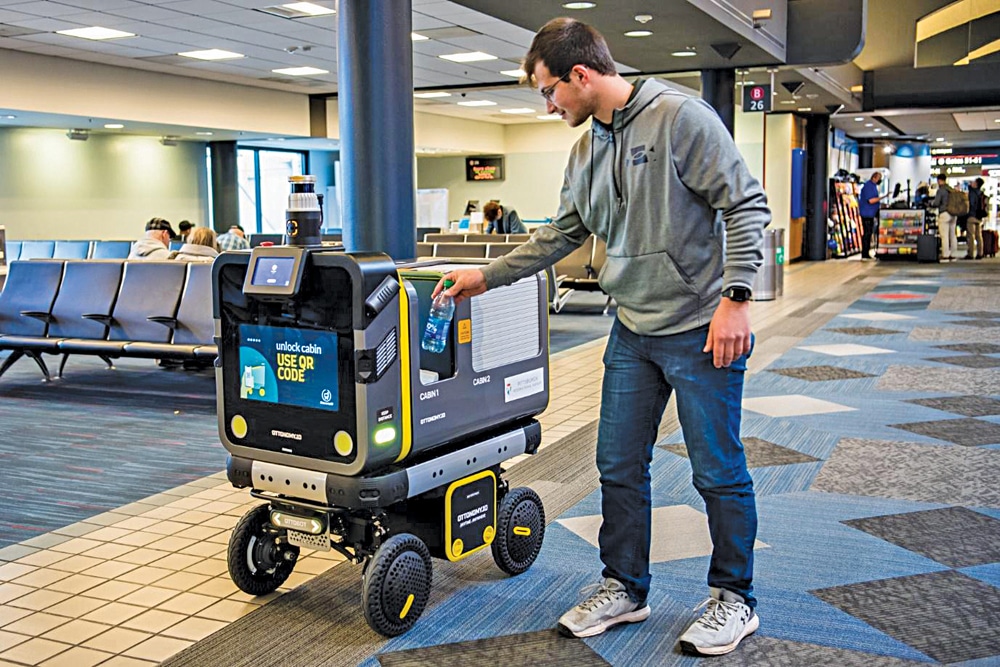
Sky delivery start-up Flyrtex promises five-minute delivery of food from local restaurants to customers’ backyards. They too operate in parts of North Carolina and Texas in the USA.
In a January 2023 report on drones, McKinsey researchers observed that “For drones to become truly cost-competitive across the board, operators will need to be able to shift their focus from observing airspace to operating drones, and the number of drones per operator will need to increase significantly. That, in turn, will require technology and regulation to advance sufficiently for a single operator to manage as many as 20 drones in a densely used airspace.
These advances would include autonomous drone flight in which drones fly with limited human intervention, unmanned traffic management systems, and sense-and-avoid solutions. Once those innovations are in place, regulations will need to evolve, enabling larger numbers of drones per operator. As those shifts begin to happen, the potential cost advantage of drone delivery will begin to grow.”
Self-driving Trucks or Vans
Self-driving trucks or vans from companies like Volvo, Caterpillar, and Komatsu have long been used off-roads for hauling goods in industries like mining, agriculture, and construction. They have also been used on roads in private environments, say, to transport goods from parts warehouses to manufacturing units within a private campus.
As the next step, now most major truck makers as well as start-ups like Aurora, Embark, Kodiak, Plus, TuSimple, Waabi, and Waymo are working on Level-4 autonomy on highways or open roads. Many claims that their technologies will be feature-ready this year. Implementing autonomous long-haul deliveries is every truck maker’s dream. As driving on highways is a monotonous task the drivers would be happy to be relieved of it, unlike short, local trips.
In a demonstration by Kodiak Robotics and U.S. Express, last March, a self-driving eighteen-wheeler traveled non-stop for five days, carrying goods between Dallas and Atlanta. It did four round trips, which means more than 10,000km, in five days. It would have taken ten days for a human driver to do, with regular breaks in between. The trip was, of course, supervised by drivers, taking turns behind the wheel. And according to reports by the company, they had to intervene more than once.
Although highways are more structured and easier to maneuver than city roads, there is still a lot for trucks to learn, including changing lanes at the right time and knowing when to stop. Hence, even the so-called fully-autonomous trucks will continue to have drivers in them in the near future.
Another class of autonomous trucks is for middle- and last-mile delivery, that is, for transporting goods between warehouses or to local stores. This requires traveling on public roads, which is quite a challenge.
Microsoft is planning to invest more than $10 million in Gatik, a California-based company that is actively championing the use of autonomous trucks on public roads. Its customers include Walmart, Georgia-Pacific, KBX, and Pitney Bowes. They use medium-duty, Level-4-ready trucks from Isuzu. Gautam Narang, Co-Founder and CEO of Gatik said in a recent interview that they expect to have hundreds of trucks deployed in commercial operations by the end of 2023.
Udelv is another California-based company in this space. Its Transporter is a cabless autonomous delivery vehicle with a modular cargo pod that can carry a total of 900kg of goods. The company targets middle- and last-mile delivery. Traveling at speeds up to 112kmph, Udelv’s vehicle can cover between 250 and 500km depending on the battery pack, and makeup to 80 stops per cycle. Udelv hopes to have 50,000 vehicles operating on public roads by 2028.
In December 2022, Carrefour Drive and Goggo Network collaboratively trialed mobile delivery using an autonomous delivery vehicle operating on public roads, both in heavy traffic and in normal conditions, covering 15km at up to 70kmph. Online orders are packed and loaded on the shuttle, which makes its way to customers who can open their locker using a password shared through SMS to retrieve the goods. The shuttle is capable of making multiple stops in one run. Carrefour has obtained authorization to run its vehicle on a circuit of 15 kilometers in France.
Since they are heavy and can prove hazardous in case of a malfunction, self-driving trucks—on highways as well as public roads—are still highly regulated and are permitted only in a few regions across the world. Forbes contributor and trend watcher, Richard Bishop, writes, “2024 appears to be the launch window for commercial driverless on highways if statements by Aurora and Kodiak play out according to plan.
Therefore, 2023 will see a substantial portion of driverless operations in conducting final on-road validation testing. OEMs will keep their launch dates close to the chest, but I’d be very surprised if they made a move sooner. Waymo marches to their own drummer, and if I had to place a bet, I’d put my money on them to be the first mover here, maybe even during the coming year.”
Ground Delivery Bots
This is where ground delivery bots and small vehicles have an advantage. Regulatory bodies that are wary of large trucks are more open to the idea of small autonomous delivery vehicles and bots. These are four- or six-wheeled vehicles or robots that travel on sidewalks or streets to deliver food and parcels to end consumers. Sensors enable them to assess obstacles and safely navigate around people, animals, and objects. They are small, move slowly, and carry small payloads.
Restaurants, grocery stores, and other establishments partner with service providers to use their app-based robots for deliveries within a small radius. When a customer places an order, a robot from the network is assigned to pick up their order from their vendor and deliver it to a pinned location. In most cases, the delivery bot has a locker box that contains the items to be delivered. The customer receives a password to open the locker box. Contactless authentication options may also be used.
Autonomous last-mile delivery robots vary in size and function. Some, like Nuro, are as big as a small car, while others are small and cute—like a locker box with wheels. Some move on pavements, and others on roads. Some can do only a single delivery, while others have modular containers and can manage multiple stops.
Amazon was one of the earliest to enter this field. They trialed a six-wheeled delivery device called Scout in California for almost three years, but they scaled back the project last year.
FedEx had also developed an interesting same-day delivery robot, Roxo, in collaboration with famous inventor Dean Kamen. A handsome robot, with flashy lights and all the works, it could even climb curbs and steps to deliver packages directly to a customer’s door, making it more accessible to customers with limited mobility. However, they shut down the project last year to focus on more near-term opportunities.
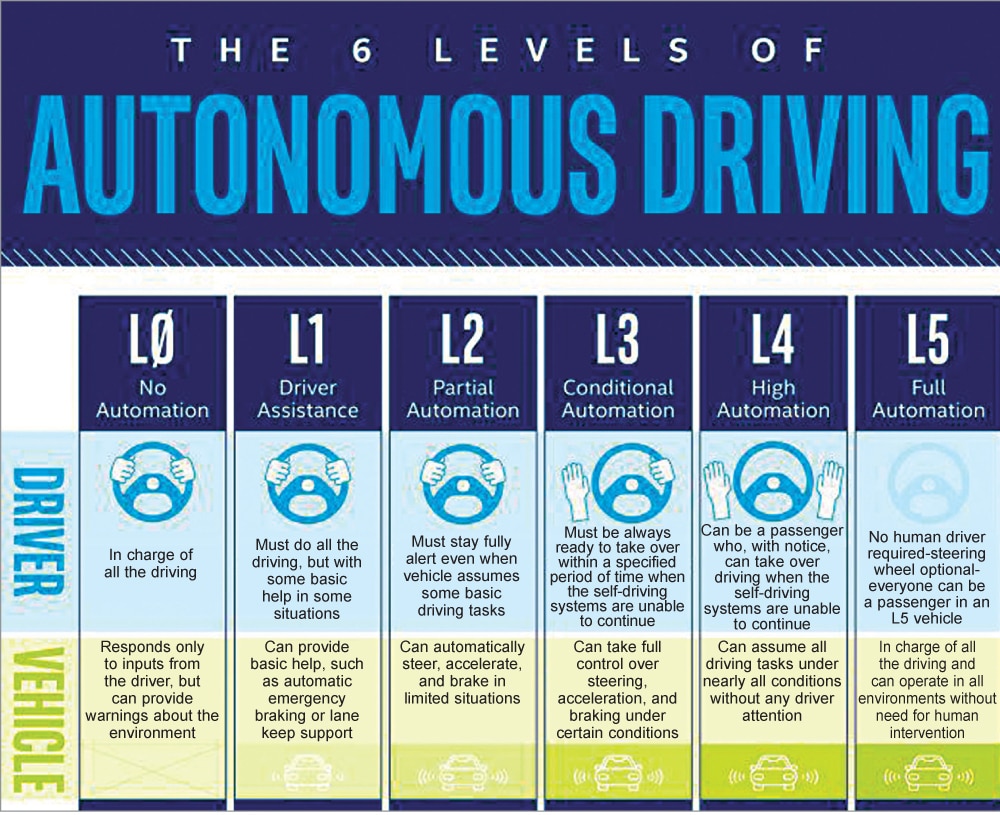
Nevertheless, these early movers served as inspiration for a dozen or more startups to make this a very competitive space today!
Nuro was the first company to receive an autonomous exemption from the National Highway Traffic Safety Administration, USA. Its four-wheeled machine weighs nearly 700kg and has a top speed of around 70kmph. It can carry payloads of 225kg, with heating and cooling capabilities and customizable compartments. Nuro has piloted solutions in Texas, Arizona, and California for partners like Domino, Kroger, Walmart, FedEx, and 7-Eleven. They recently signed a 10-year deal with Uber Eats for robot food delivery.
Not all robots are this big. Those from Starship, Kiwibot, Cyan Robotics, and Ottonomy.IO are small and cute. Kiwibot has deployed over 50 robots in more than 25 universities and has made more than 200,000 deliveries in the cities of San Jose, Santa Monica, Denver, and Dallas in the US, and in parts of Taiwan and Columbia.
Coco (Cyan Robotics) robots specialize in 15-minute food deliveries from local restaurants. Tortoise, on the other hand, debuted mobile vending robots. A vendor can load the Tortoise robot with goods. The robot goes around campuses or street sidewalks ‘selling’ these. Customers can take what they want and self-checkout. The robots are supervised remotely by human operators.
Ottobot from Ottonomy.IO makes life convenient for passengers at airports by delivering food near their respective gates. They operate in several airports, including Cincinnati, Pittsburgh, and Rome. At this year’s CES, Ottonomy.IO revealed Yeti, a self-dispensing robot that can deliver goods even when the customer is not available at home to collect them. It would be risky to deliver fragile objects though, because they slide down from the locker box, and there is a chance of breakage.
Goggo Network is an autonomous mobility solutions provider in Europe. Like most others, they also offer their solutions as-a-service to multiple partners. They have small and big, single- and multiple-stop robots. Last year, they joined the French government-funded 5G Open Road project. They operate in France and Spain, with clients like Carrefour and DIA.
Swiss startup LOXO plans to launch its mobile delivery robots on public roads this spring.
They plan to start with Switzerland and expand to the UK and Germany. Their AV is essentially a compact, electrically-powered box on wheels with compartments for packages that uses an array of sensors to deliver its self-driving functionality. LOXO travels at typical urban traffic speeds and stops immediately at the first sign of any danger. It is observed remotely by trained personnel who can take control at any time, if necessary, and also speak to the users.
What’s in Autonomous Last-mile Delivery Bots
Autonomous last-mile delivery bots are very similar to self-driving cars. They require almost all the technology, plus some more. Each bot contains a variety of sensing technologies, such as state-of-the-art thermal cameras, point cloud sensors, lidar and radar, inertial ultrasonic sensors, and more. Then, there are processing units, which include central processing units, graphics processing units, neural network accelerators, field-programmable gate arrays, and embedded integrated circuits.
That said, software forms the backbone of any autonomous system. “We have a massive software system of millions of lines of code, both in the robot and in the cloud. In simple terms, each robot has an awareness system. It can see what’s going on, avoid objects, detect objects, brake, accelerate, and turn corners. It identifies where it is and signals to central locations if there’s a problem with the device. And the cloud software handles things like payments, route planning, and fleet orchestration. It monitors the robot’s health and energy charge and ensures that the correct number of robots arrive at the right time at the right locations. It’s a choreography of things in the cloud as well as things on the ground,” explains Alastair Westgarth, CEO of Starship Technologies, in a Forbes interview.
The robots almost always have a data connection, either cellular or Wi-Fi, depending on the area of deployment. They use this to communicate with the cloud. But, in rare cases, if the connection fails, the robots are not stumped. They keep moving safely in permitted routes, till they get reconnected.
During ‘rest time’ the robots usually move to a hub for charging and software upgrades. This is when diagnostics are uploaded to the cloud. Companies use this to study how the robot’s day went and to improve its behavior further.
Many technologies, from perception to path planning and mapping, appear common to autonomous delivery robots and autonomous cars. But, Ritukar Vijay, Founder and CEO of Ottonomy.IO explains in one of his articles that, “Although the delivery robots are low in speed, they often engage in more complicated, unstructured scenarios and pedestrian interactions than autonomous cars.” Due to this, there are a few areas where autonomous delivery robots are acting as a precursor to autonomous cars.
First, he explains, the nuances of running an autonomous fleet of ten vehicles compared to a fleet of 200 to 2,000 delivery robots is a huge shift in AV operations. The educational benefits of autonomous robot fleets include and are not limited to, autonomous fleet management, distributed AV information and processing, fallback safety, fleet orchestration, and more. Second, because more delivery robots are out in the market, they are more exposed to a variety of edge cases. Sometimes, sidewalks, airports, and curbsides are more challenging than lane-guided roads for autonomous cars, and that results in further advancements in active perception, situational awareness, and autonomous behaviors and safety (in general).
Design, of course, is a different ballgame. The purpose of delivery gives rise to certain special requirements. Obviously, storage is an important aspect of the design. This comes in various forms—modular cargo boxes, simple locker boxes, and so on—depending on the size and purpose of the robot. Some have hot and cold compartments as well. They also need to look friendly and have a safe, harmless design with soft, rounded corners. Some like Nuro even have airbags in the front to protect pedestrians from harm in case of a bump.
Delivery robots have to function in line with local rules and regulations at all times. They can move only where they are permitted. And features like lights and alarms have to be built in so that fellow pedestrians get a clear indication of when and where the robot is moving. Delivery robots also have to be very courteous and nice to people. They are taught to say, excuse me, when someone is blocking the way, and Thank you, after they oblige and move!
“It’s a never-ending journey to make sure that this human-robot dynamic is maintained, fostered, and improved.
When the robot makes an error or does something unexpected, we try to take all of these points of feedback in to make sure that it gets better and better, because the bar gets raised as well. We can’t assume the bar is static. I am of the opinion that if you’re going to automate something, it not only needs to be as good but it needs to be better than a human being,” says Westgarth.
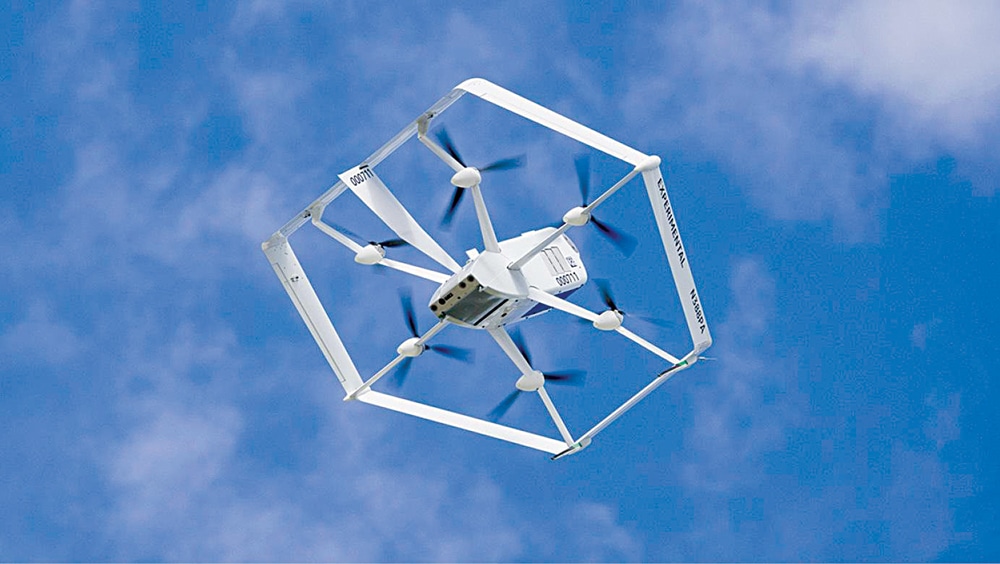
Delivery Bots are Replacement for Human Workers!
Although many look at autonomous delivery as a replacement for human workers, as something that’s going to steal their jobs, that might not always be the case. It relieves them from monotonous jobs, grueling night shifts, extended work hours, and hazardous conditions, freeing human labor for more subjective and valuable tasks.
Westgarth of Starship Technologies said in a recent interview, “We believe that if you can insert a value into the economy overall, whatever jobs the economy provides will be of higher value. One of the interesting dynamics that we saw in some environments was that our partners and customers would have a hard time hiring staff. However, when we posted job openings for staff—technical staff, project management staff, or whatever—we would have no trouble hiring them. They would come to us. It is because they saw more opportunities to be involved in an evolving economy.
To them, it was more attractive working with robotics than making food or delivering food themselves. Both are extremely valuable. But at the end of the day, if we could raise the value of what the human being does versus what this automated machine does, I think that’s a good change in society overall.”
Westgarth cites the example of automation in the automotive industry. The level of automation today is exponentially higher than it was 20-30 years earlier. Superficially, we would think that all this automation would have taken so many jobs away from human workers. However, there are many more workers in the automotive industry today than before. So, the situation is quite nuanced, and not as easy as saying automation will take away the jobs.
Honestly, you cannot stop technology, not at this stage of growth; so it is better to find a balance. Unlike self-driving cars and heavy vehicles, autonomous last-mile delivery systems, especially mobile robots, seem well-poised for growth in the near term. Trendwatchers believe that more countries will start giving permission for small and slow AVs to ply on sidewalks, roads, and public places, unlike the hesitance with regard to fast cars. Slowly, the laws of the economy will also play their magic, and find a balance between human-powered and machine-powered tasks.
Janani G. Vikram is a freelance writer based in Chennai, who loves to write on emerging technologies and Indian culture. She believes in relishing every moment of life, as happy memories are the best savings for the future








